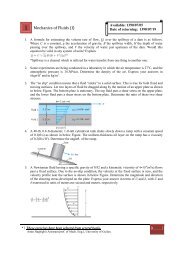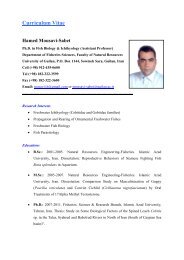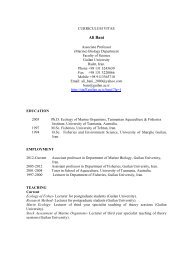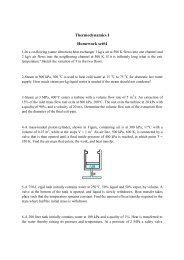Medical Tourism in Developing Countries
Medical Tourism in Developing Countries
Medical Tourism in Developing Countries
- No tags were found...
Create successful ePaper yourself
Turn your PDF publications into a flip-book with our unique Google optimized e-Paper software.
164 ● <strong>Medical</strong> <strong>Tourism</strong> <strong>in</strong> Develop<strong>in</strong>g <strong>Countries</strong>resulted <strong>in</strong> the creation of an <strong>in</strong>ternational health-care market [italics m<strong>in</strong>e]” 90 ).The United States leads with respect to those ris<strong>in</strong>g costs. It has the world’shighest spend<strong>in</strong>g on health care: 14 percent of GDP, namely $1 trillion.It is largest service sector <strong>in</strong> the economy. 91 The Medicaid budget is <strong>in</strong>creas<strong>in</strong>gby 9–10 percent every year and the un<strong>in</strong>sured are further burden<strong>in</strong>g thesystem by overconsumption of expensive emergency room care. Employer’shealth plans are ris<strong>in</strong>g at double digits and twice the rate of <strong>in</strong>flation. 92General Motors, for example, laid off some 20 percent of its workforce <strong>in</strong>2006 primarily to reduce its annual health care budget of $5 billion. 93Given such ris<strong>in</strong>g costs, coupled with budgetary constra<strong>in</strong>ts and decreas<strong>in</strong>g<strong>in</strong>surance coverage, further privatization and globalization of health carewill occur. Indeed, <strong>in</strong> order to control costs at home, Western hospitals anddoctors were the first to turn to LDCs when they began contract<strong>in</strong>g theirskilled manpower to transcribe medical records and read X-rays. It was onlya matter of time before patients themselves began to go. And if they go <strong>in</strong>large numbers, the costs of medical care could be reduced. 94 In a studyof medical tourism, Mattoo and Rath<strong>in</strong>dran found that the sav<strong>in</strong>gs tothe United States, if just 5 percent of patients went overseas, would be$692 million per year. If 20 percent went, that number would rise to$2.7 billion. 95Overemphasis on costs <strong>in</strong> medical care raises important concerns forsource and dest<strong>in</strong>ation countries, not the least of which are ethical <strong>in</strong>nature. In private health care, the patient-doctor relationship is alteredwhen medical services are sold for a profit and medical care becomes abus<strong>in</strong>ess transaction. Under those circumstances, as Teh and Chu noted,there is the possibility that we lose sight of the fact that we are discuss<strong>in</strong>ga humane and morally driven discipl<strong>in</strong>e. We will beg<strong>in</strong> to look at the practiceof medic<strong>in</strong>e as a market opportunity. 96 That will require a reassessmentof the rules perta<strong>in</strong><strong>in</strong>g to organ sales raised <strong>in</strong> chapter 4.Bottom l<strong>in</strong>e: The ramifications of medical tourism on source-countryhealth-care costs are likely to be far-reach<strong>in</strong>g and affect resource prices <strong>in</strong><strong>in</strong>dustries not immediately affiliated with medic<strong>in</strong>e.Health InsurancePrivate and public health <strong>in</strong>surances <strong>in</strong> Western source countries will <strong>in</strong>creas<strong>in</strong>glybe affected by medical tourism. With respect to the former, it is likelythat demand for expensive health plans will drop as domestic patients travelabroad for health care that requires out-of-pocket payments. That is sure toaffect the profit marg<strong>in</strong>s of commercial <strong>in</strong>surance companies. 97 Moreover, ifhealth care costs at home decl<strong>in</strong>e due to decreas<strong>in</strong>g demand, that will further
















